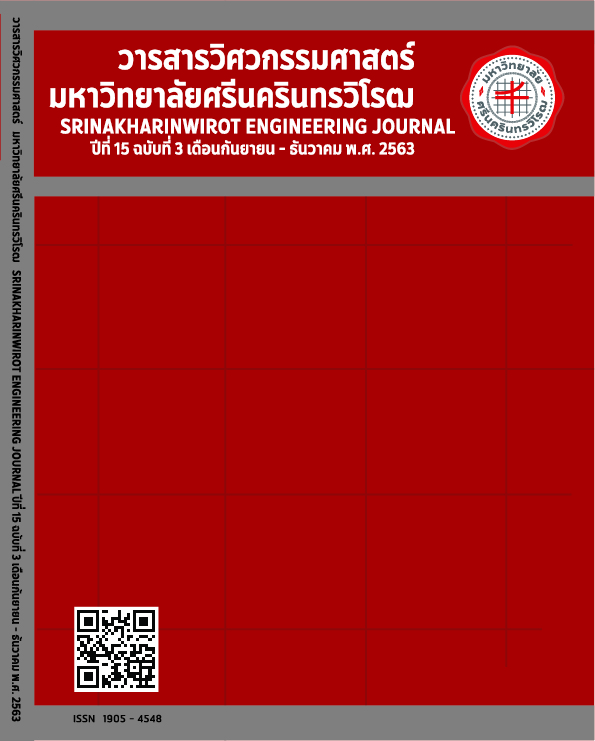Development of Adjustment Factors affecting The Capacity of DRR Two-Lane Highways with Indirect Empirical Method
Main Article Content
Abstract
The objective of this study is to develop the adjustment factor for use in estimating capacity of DRR two-lane highways by using the development of traffic micro-simulation model instead of directly observed, as well as presenting the impact of factors affecting the capacity of the DRR two-lane highway. The results show that the estimation of the average maximum capacity of all 3 site is 3,671 pc/h, with the proportion of motorcycles being the factor that causes the maximum capacity to be reduced compared to the base condition due to the driving behavior with other vehicles on the carriageway. In this regard, the researcher has summarized the adjustment table of the proportion of motorcycle, proportion of heavy vehicle and directional split, as an alternative way to use the capacity estimation of DRR two-lane highways.
Article Details
Copyright belongs to Srinakharinwirot University Engineering Journal
References
Department of Rural Road. (2020, May 17). Highway laws and regulations [Online]. Available: https://drr.go.th/?page_id=14600
Federal Highway Administration, “Highway Functional Classification: Concepts, Criteria and Procedures,” U.S. Department of Transportation, Federal Highway Administration, 2014.
Hussain, H., Uma, R., Ahmad, R.S., Farhan, M.S. and Dadang M.M., “Key Components of A Motorcycle-Traffic System– A Study Along The Motorcycle Path In Malaysia,” IATSS research, 29(1), 1327-1339, 2005.
Wuttikrai Chaipanha, “Development of Highway Capacity Analysis Guideline using Traffic Micro-Simulation Model,” Ph.D. dissertation in Civil Engineering, Graduate School, Khon Kaen University., 2018.
Transport Research Board (TRB), “Highway Capacity Manual 2010,” 5th Ed., National Research Council, Transportation Research Board, Washington, D.C,USA: BROOKS/COLE., 2010.
Design guideline of road medians and road widening, Bureau of Surveying and Design, Department of Highways, ministry of transport, 2011.
Sharma N, Sarkar PK, Velmurugan S, “Estimation of Capacity for Multi-Lane Divided Inter-Urban Highways using Videography Technique of Data Collection,” in 6th Urban Mobility India Conference & Expo 2013, 2004.
Design Manual for Roads and Bridges, Barton-Aschman Associates, Inc. and Cambridge Systematics, Inc, U.S. Department of Transportation, 1997.
Transport Research Board (TRB), “Planning Techniques to Estimate speed and service volumes for planning applications,” Report 387. National Research Council, Transportation Research Board, Washington, D.C, U.S.A,, 1997.
Luttinen, R.T, “Percent Time Spent Following as Performance Measure for Two-Lane Highways,” Journal of the Transportation Research Board, 2, 52-59, 2001.
Kim J., “Capacity Estimation Method for Two-Lane, Two-Way Highways Using Simulation Modeling,” Ph.D. Thesis, The Pennsylvania State University, 2006.
Satish Chandra et. al, “Capacity estimation procedure for two-lane roads under mixed traffic conditions,” in Indian Road Congress Paper No.498, 2004.


